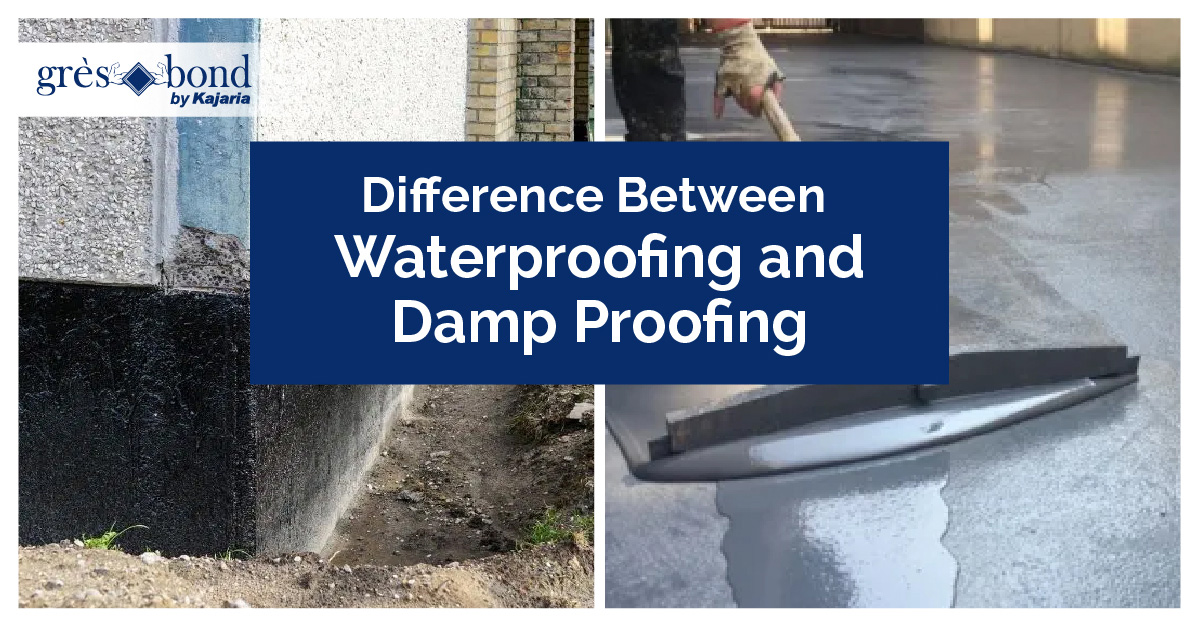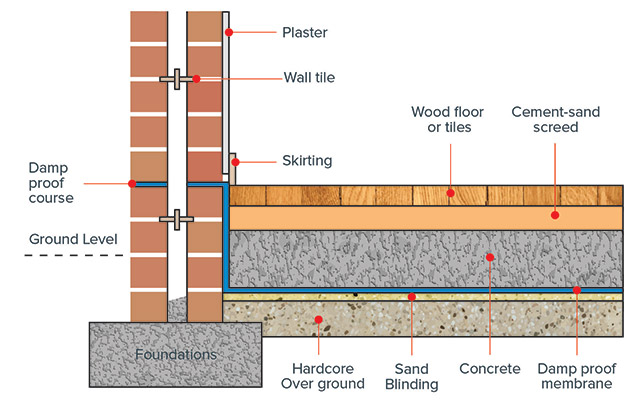How to spot early signs of rising damp: A must-read for property owners in damp proofing newcastle
How to spot early signs of rising damp: A must-read for property owners in damp proofing newcastle
Blog Article
Exploring the Various Techniques and Solutions for Effective Damp Proofing
Wetness in buildings poses significant difficulties to both architectural integrity and interior air quality. Different techniques and services have actually arised to combat this pervasive concern. From conventional damp-proof membrane layers to ingenious chemical treatments, each approach offers distinct advantages. Understanding these choices is important for efficient dampness control. However, choosing the ideal remedy depends upon specific building conditions and requirements, motivating more expedition into the most efficient wet proofing techniques readily available.
Comprehending the Reasons For Moisture
Although moisture can occur from different sources, understanding these reasons is vital for effective remediation. Commonly, wetness stems from three main sources: increasing moist, penetrating moist, and condensation. Rising wet happens when groundwater travels upwards via porous materials, such as block or rock, usually as a result of an absence of a reliable barrier (mould treatment newcastle). Penetrating wet is usually brought on by external variables, including roof covering leakages, malfunctioning gutters, or harmed wall surfaces, permitting water to penetrate a property. Condensation, on the various other hand, results from excess wetness airborne, typically worsened by inadequate air flow and temperature distinctions, bring about water droplets creating on surfaces. Determining these underlying problems is important, as each sort of moisture calls for a tailored technique for removal. Proper analysis helps in establishing one of the most effective remedies, ultimately securing the structural integrity of a structure and boosting indoor air top quality
Standard Damp-Proof Membrane Layers

Chemical Damp-Proofing Solutions
Chemical damp-proofing solutions use an ingenious technique to stop dampness breach in buildings. These techniques typically involve the application of fluid chemicals that pass through stonework and create an obstacle versus increasing damp. Typically utilized chemicals include silanes, siloxanes, and other water-repellent agents that react with surface area products to develop a hydrophobic layer.The application procedure normally calls for exploration holes into the walls, infusing the chemical remedy, and permitting it to treat. This approach is specifically useful for older frameworks where conventional damp-proof membranes might be unwise. Chemical damp-proofing can be much less turbulent and extra affordable than substantial remodelling projects.While reliable, these remedies depend on correct application and environmental problems for peak performance. damp specialist newcastle. Routine maintenance and monitoring are necessary to ensure the longevity of the damp-proofing therapy. In general, chemical damp-proofing stands for a versatile choice for protecting structures versus moisture-related damages
Cavity Wall Surface Construction Methods
Dental caries wall building strategies provide countless advantages, especially in dampness control and energy performance. By including an air space in between 2 layers of stonework, these wall surfaces efficiently minimize water ingress while boosting insulation. This combination not just protects structures from wetness yet also adds to lowered power consumption.
Benefits of Cavity Walls
When taking into consideration reliable damp proofing techniques, the advantages of dental caries wall surfaces stand out prominently. Tooth cavity walls include 2 different layers, developing an air gap that efficiently decreases wetness infiltration. This layout decreases the risk of dampness, as the outer wall works as an obstacle against rain and water ingress. Additionally, cavity wall surfaces boost thermal insulation, which adds to power performance by lowering warm loss. They likewise offer sound insulation, assisting to produce a quieter indoor atmosphere. The air space enables for ventilation, which aids in moisture control and reduces the likelihood of mold and mildew development. These advantages not only improve the overall comfort of a building but additionally add to its long life and architectural integrity.
Moisture Control Approaches
Reliable dampness control strategies are vital in cavity wall building and construction to ensure long-lasting defense versus wetness. One main approach involves the unification of weep holes, which assist in water drain from the tooth cavity, protecting against buildup. In addition, making use of breathable membranes can aid manage wetness degrees while allowing damp removal newcastle trapped vapor to get away. Correct positioning of insulation is additionally important, as it ought to not block water drainage courses. Furthermore, making sure that the external leaves of the cavity wall are built with water-resistant materials boosts total toughness. Normal maintenance checks are necessary to recognize any blockages or damage early, securing the framework's honesty. Ultimately, a combination of these methods develops a durable defense versus wetness intrusion in dental caries walls.
Insulation and Power Performance
Insulation plays a vital role in boosting power effectiveness within tooth cavity wall surface construction. By incorporating shielding products, these walls produce a thermal barrier that reduces heat loss and reduces power intake. Reliable insulation not only helps maintain a steady indoor temperature yet additionally reduces the risk of dampness, as it prevents condensation within the wall surface cavity. Numerous techniques, such as the usage of rigid foam boards or mineral woollen, can be used to accomplish excellent insulation efficiency. Furthermore, proper installment is necessary to assure that voids and gaps are decreased, which can otherwise endanger energy performance. Ultimately, a well-insulated dental caries wall adds considerably to general sustainability and lowers heating & cooling costs for homeowners.
External Damp Proofing Approaches
External wet proofing approaches are vital for safeguarding frameworks from dampness infiltration. 2 efficient methods consist of the application of water resistant membrane layers and the installment of French drains. These services aid mitigate water accumulation and maintain the integrity of buildings.
Waterproof Membrane Application
While numerous techniques exist for stopping wetness ingress, the application of water-proof membranes stays a very effective outside moist proofing strategy. These membranes are typically made from materials such as polyethylene, rubber, or customized asphalt, providing a robust barrier versus water infiltration. The installment procedure entails applying the membrane to the external surfaces of walls or foundations, making certain complete insurance coverage to avoid leaks. Appropriate attachment and sealing at joints are essential to taking full advantage of performance. Water-proof membrane layers can be used in numerous forms, including fluid coatings and sheet membranes, allowing for flexibility based on the certain requirements of the structure. This method not just shields buildings from dampness but also enhances their long life and structural honesty.
French Drainpipe Setup
One efficient technique for handling groundwater and protecting against wetness accumulation around a building's structure is the installment of a French drain. This drainage system contains a trench full of crushed rock and a perforated pipeline that reroutes surface area water away from the foundation. Appropriate setup needs cautious planning, guaranteeing that the drain inclines far from the structure to help with suitable water flow. Additionally, the area of the drain is vital; it needs to be positioned in locations susceptible to pooling or excess wetness. Regular upkeep, including clearing particles from the crushed rock and making sure the pipe continues to be unhampered, is crucial for lasting efficiency. Eventually, a well-installed French drainpipe can substantially minimize the risk of water-related issues in cellars and foundations.
Inside Waterproofing Techniques
Inside waterproofing methods are vital for securing a building's interior from dampness infiltration and possible water damage. These methods generally involve the application of specific materials and methods made to create a wetness obstacle within the structure. One typical strategy is making use of water-proof finishes or sealants on wall surfaces and floors, which prevent dampness from permeating surfaces.Additionally, mounting indoor drainage systems, such as sump pumps, can successfully handle water accumulation in cellars and creep areas. One more approach includes using vapor obstacles, which are set up to prevent moisture motion from the ground right into living spaces.Moreover, dealing with any fractures or spaces in wall surfaces or structures with ideal sealers assures a complete protection versus water breach. By applying these interior waterproofing methods, residential property proprietors can greatly decrease the danger of mold and mildew development, architectural damages, and various other moisture-related issues. Appropriate implementation of these methods is essential for long-term protection and building stability.
Regular Maintenance and Inspection Practices
Regular maintenance and inspection techniques are vital for assuring the long-term effectiveness of moist proofing options in any type of building. Routine checks allow homeowner to recognize early indicators of dampness invasion, such as peeling paint, mold and mildew development, and stuffy odors. These indicators can signal underlying problems that require immediate attention.Inspections need to be performed at the very least every year, concentrating on at risk areas like basements, creep areas, and exterior wall surfaces. During these assessments, residential or commercial property owners need to take a look at sealants, water drainage systems, and ventilation to validate they work correctly.Additionally, maintaining seamless gutters and downspouts is important, as clogged up systems can cause water build-up near the structure. Applying a normal maintenance routine, along with prompt repairs, can substantially extend the life expectancy of damp proofing actions and safeguard the architectural honesty of the building. Aggressive procedures ultimately add to the overall wellness and security of the living setting.
Often Asked Questions
For How Long Does Damp Proofing Typically Last?
The period of damp proofing efficiency differs, usually lasting between 20 to 50 years. Variables such as application high quality, ecological problems, and maintenance practices substantially influence the durability of the wet proofing therapy.

Can I Damp Proof My Home Myself?
The specific pondered the feasibility of do it yourself damp proofing. With proper study and the ideal products, it is possible. However, they likewise identified the importance of professional advice to guarantee long-lasting performance and protect against future problems.
What Are the Indicators of Ineffective Damp Proofing?
Indications of inadequate damp proofing include relentless musty odors, noticeable mold and mildew growth, peeling off paint, moist patches on walls, and timber decay - damp removal newcastle. House owners must deal with these issues promptly to avoid additional damages and health worries
Does Damp Proofing Affect Indoor Air Top Quality?

Just How Much Does Professional Damp Proofing Expense?
Specialist damp proofing expenses differ considerably, commonly ranging from $1,000 to $5,000 depending upon the residential property's dimension, the extent of the moist concern, and chosen techniques. Each scenario requires a tailored evaluation for exact pricing. Frequently, wetness stems from three primary sources: climbing wet, passing through wet, and condensation. When thinking about reliable wet proofing approaches, the advantages of dental caries walls stand out prominently. External damp proofing methods are important for protecting structures from moisture infiltration. While various methods exist for avoiding wetness ingress, the application of water resistant membranes stays an extremely efficient outside moist proofing method. Indications of inadequate wet proofing consist of consistent mildewy odors, visible mold growth, peeling paint, wet spots on wall surfaces, and timber decay.
Report this page